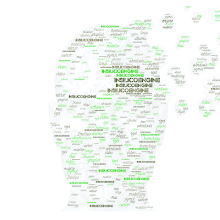Single (or Multiple) Model Protein Structure Analysis
VADAR (Volume, Area, Dihedral Angle Reporter) is
a compilation of more than 15 different algorithms and programs for
analyzing and assessing peptide and protein structures from their PDB
coordinate data. The results have been validated through extensive
comparison to published data and careful visual inspection. The VADAR web
server supports the submission of either PDB formatted files or PDB
accession numbers. VADAR produces extensive tables and high quality
graphs for quantitatively and qualitatively assessing protein structures
determined by X-ray crystallography, NMR spectroscopy, 3D-threading or
homology modelling.
ResProx (Resolution-by-proxy or
Res(p)) is a web server that predicts the atomic resolution of NMR
protein structures using only PDB coordinate data as input. More
specfically, ResProx uses machine learning techniques to accurately
estimate (with a correlation coefficient of 0.92 between observed and
calculated) the atomic resolution of a protein structure from 25
measurable features that can be derived from its atomic coordinates.
Because atomic resolution is a simple and near-universal measure of
structure quality (i.e. < 2.0 Å is good, > 4.0 Å is bad), ResProx
offers X-ray crystallographers and NMR spectroscopists the opportunity
to easily assess the accuracy and quality of their 3D protein
structures. It also allows them to assess whether their refinement
methods have made their structures better (or worse) than what the
experimental data suggests. Furthermore, since coordinate data is common
to both X-ray and NMR, ResProx should allow structural biologists to
use a single, easily understood number to compare the structures
determined by NMR with those determined by X-ray crystallography.
GeNMR
GeNMR (GEnerate NMR structure) is a web server for generating
3D protein structures using NOE-derived distance restraints
and NMR chemical shifts. The web server produces an ensemble of PDB coordinates
within a period ranging from 20 minutes to 4 hours, depending on
protein size, server load, quality and type of experimental information, and selected protocol options.
With this form you can predict 1H, 13C and 15N
chemical shifts for your favorite protein using only its PDB file as
input.
ShiftX uses a unique semi-empirical approach to calculate protein
chemical shifts. Tests conducted on 47 different proteins indicate that
program is able to achieve correlation
coefficients between observed and calculated shifts of 0.911 (HA),
0.980 (CA), 0.996 (CB), 0.863 (CO), 0.909 (N), 0.741 (HN) and 0.907
(side H) with an
RMS error of 0.23, 0.98, 1.10, 1.16, 2.43, 0.49, 0.30 ppm
respectively.
for main-chain chemical shifts
RCI webserver predicts protein flexibility by calculating the Random Coil Index from backbone chemical shifts (Cα, CO, Cβ, N, Hα, NH) and estimating values of model-free order parameters as well as per-residue RMSF of NMR and MD ensembles from the Random Coil Index.
PREDITOR is a program for PREDIcting φ, ψ, χ1, and ω TORsion angles in proteins
from 13C, 15N and 1H chemical shifts and sequential homology. PREDITOR's accuracy in predicting φ and ψ is close to
90%. The average χ1 accuracy is 84% while the ω accuracy is
99.98% for trans
peptide bond identification and 93% for cis peptide bond identification.
Overall, the program is 35X faster and its predictions are
approximately 20% better than existing methods.
XPLOR-NIH
HOMCOS : Searching and Modeling of 3D Structures of Complexes
HOMCOS(HOMology modeling of COmplex Structure) is a
server for modeling complex 3D structures using 3D molecular
similarities based on template complex 3D structures in PDB. For a given
amino acid sequence or a chemical strucvure, the server provides list
of contacting molecules in PDB, predicted complex 3D structure based on
the template PDB structures.
Build Homology model : Follow the link below

Comments
Post a Comment